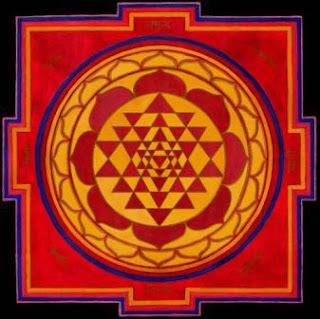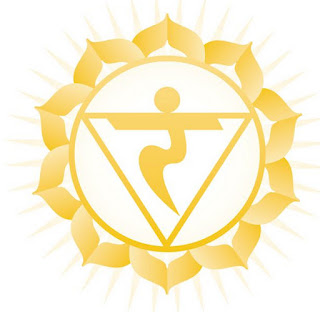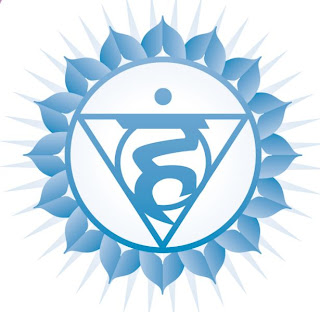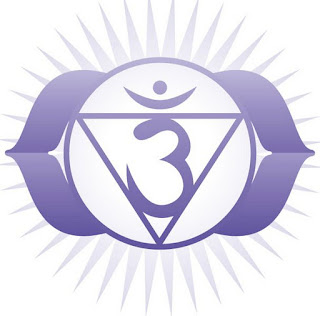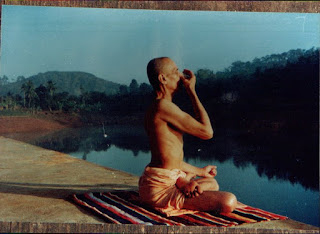PATANJALI YOGA SUTRAS ebook download
Sanskrit text with Translation and Commentary
By
Swami Vivekananda
1.Introduction
2.Samadhipadam
3.Sadhanapadam
4.Vibhootipadam
5.Kavalyapadam
Sanskrit text with Translation and Commentary
By
Swami Vivekananda
1.Introduction
2.Samadhipadam
3.Sadhanapadam
4.Vibhootipadam
5.Kavalyapadam
BEFORE going into the Yoga Aphorisms I will try to discuss one great question, upon which the whole theory of religion rests, for the Yogis. It seems the consensus of opinion of the great minds of the world, and it has been nearly demonstrated by researchers into physical nature, that we are the outcome and manifestation of an absolute condition, back of our present relative condition, and are going forward, to return again to that absolute. This being granted, the question is, which is better, the absolute or this state? There are not wanting people who think that this manifested state is the highest state of man. Thinkers of great caliber are of the opinion that we are manifested specimens of undifferentiated being, and this differentiated state is higher than the absolute. Because in the absolute there cannot be any quality they imagine that it must be insensate, dull, and lifeless, that only this life can be enjoyed, and therefore we must cling to it.
First of all we want to inquire into other solutions of life. There was an old solution that man after death remained the same, that all his good sides, minus his evil sides, remained forever. Logically stated this means that man’s goal is the world; this world carried a stage higher, and with elimination of its evils is the state they call heaven. This theory, on the face of it, is absurd and puerile, because it cannot be. There cannot be good without evil, or evil without good. To live in a world where all is good and no evil is what Sanskrit logicians call a “dream in the air.” Another theory in modern times has been presented by several schools, that man’s destiny is to go on always improving, always struggling towards, and never reaching, the goal. This statement, though, apparently, very nice, is also absurd, because there is no such thing as motion in a straight line. Every motion is in a circle. If you could take up a stone, and project it into space, and then live long enough, that stone would come back exactly to your hand. A straight line, infinitely projected, must end in a circle.
Therefore, this idea that the destiny of man is progression ever forward and forward, and never stopping, is absurd. Although extraneous to the subject, I may remark that this idea explains the ethical theory that you must not hate, and must love, because, just as in the case of electricity, or any other force, the modern theory is that the power leaves the dynamo and completes the circle back to the dynamo. So with all forces in nature; they must come back to the source. Therefore do not hate anybody, because that force, that hatred, which comes out from you, must, in the long run, come back to you. If you love, that love will come back to you, completing the circuit. It is as certain as can be, that every bit of hatred that goes out of the heart of man comes back to him full force; nothing can stop it, and every impulse of love comes back to him.
On other and practical grounds we see that the theory of eternal progression is untenable, for destruction is the goal of everything earthly. All our struggles and hopes and fears and joys, what will they lead to? We will all end in death. Nothing is so certain as this. Where, then, is this motion in a straight line? This infinite progression? It is only going out to a distance, and again coming back to the centre from which it started. See how, from nebulae, the sun, moon, and stars, are produced; then they dissolve, and go back to nebulae. The same is being done everywhere. The plant takes material from the earth, dissolves, and gives it back. Every form in this world is taken out of corresponding atoms and goes back to those atoms.
First of all we want to inquire into other solutions of life. There was an old solution that man after death remained the same, that all his good sides, minus his evil sides, remained forever. Logically stated this means that man’s goal is the world; this world carried a stage higher, and with elimination of its evils is the state they call heaven. This theory, on the face of it, is absurd and puerile, because it cannot be. There cannot be good without evil, or evil without good. To live in a world where all is good and no evil is what Sanskrit logicians call a “dream in the air.” Another theory in modern times has been presented by several schools, that man’s destiny is to go on always improving, always struggling towards, and never reaching, the goal. This statement, though, apparently, very nice, is also absurd, because there is no such thing as motion in a straight line. Every motion is in a circle. If you could take up a stone, and project it into space, and then live long enough, that stone would come back exactly to your hand. A straight line, infinitely projected, must end in a circle.
Therefore, this idea that the destiny of man is progression ever forward and forward, and never stopping, is absurd. Although extraneous to the subject, I may remark that this idea explains the ethical theory that you must not hate, and must love, because, just as in the case of electricity, or any other force, the modern theory is that the power leaves the dynamo and completes the circle back to the dynamo. So with all forces in nature; they must come back to the source. Therefore do not hate anybody, because that force, that hatred, which comes out from you, must, in the long run, come back to you. If you love, that love will come back to you, completing the circuit. It is as certain as can be, that every bit of hatred that goes out of the heart of man comes back to him full force; nothing can stop it, and every impulse of love comes back to him.
On other and practical grounds we see that the theory of eternal progression is untenable, for destruction is the goal of everything earthly. All our struggles and hopes and fears and joys, what will they lead to? We will all end in death. Nothing is so certain as this. Where, then, is this motion in a straight line? This infinite progression? It is only going out to a distance, and again coming back to the centre from which it started. See how, from nebulae, the sun, moon, and stars, are produced; then they dissolve, and go back to nebulae. The same is being done everywhere. The plant takes material from the earth, dissolves, and gives it back. Every form in this world is taken out of corresponding atoms and goes back to those atoms.
Continue reading Patanjali yoga sutra by swami vivekananda
Download free ebook on patanjali yoga sutra
Download free ebook on patanjali yoga sutra
OR

